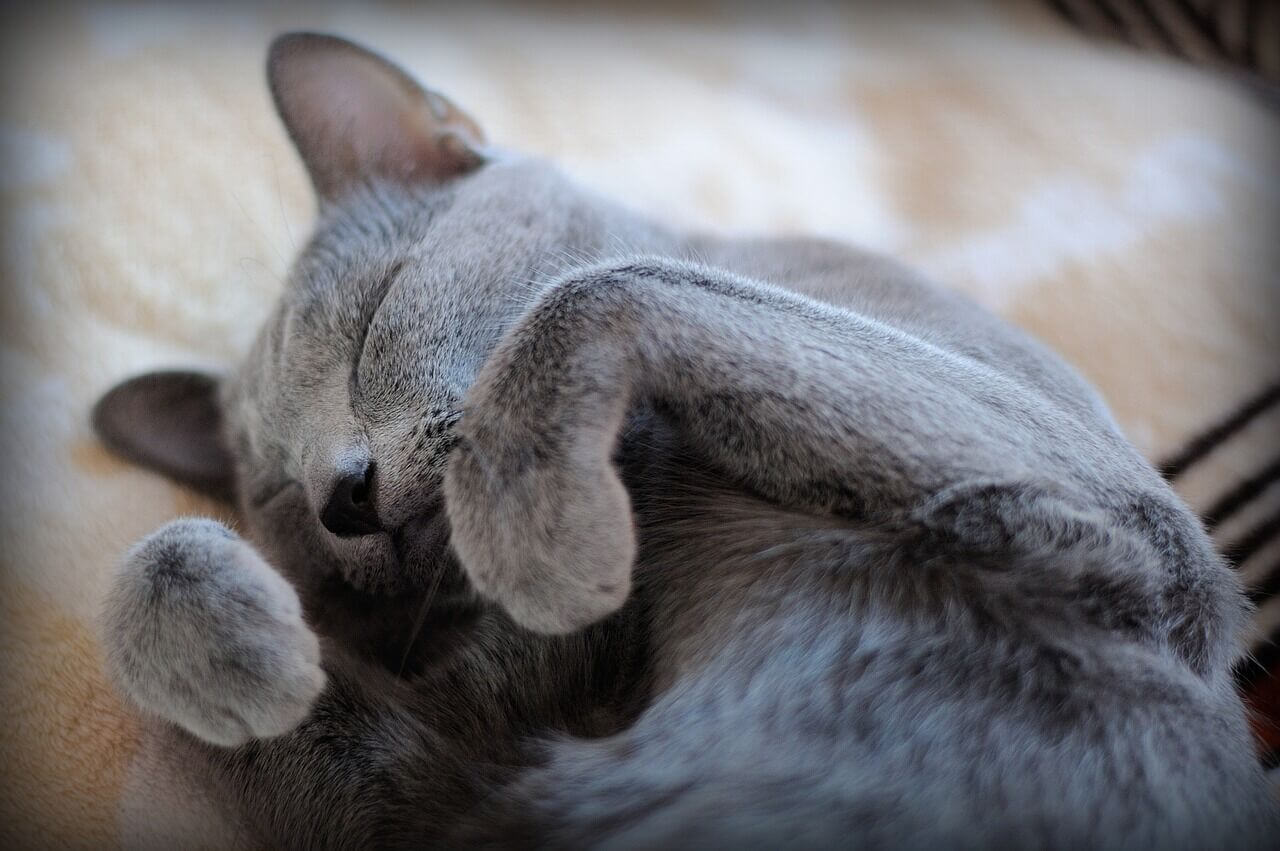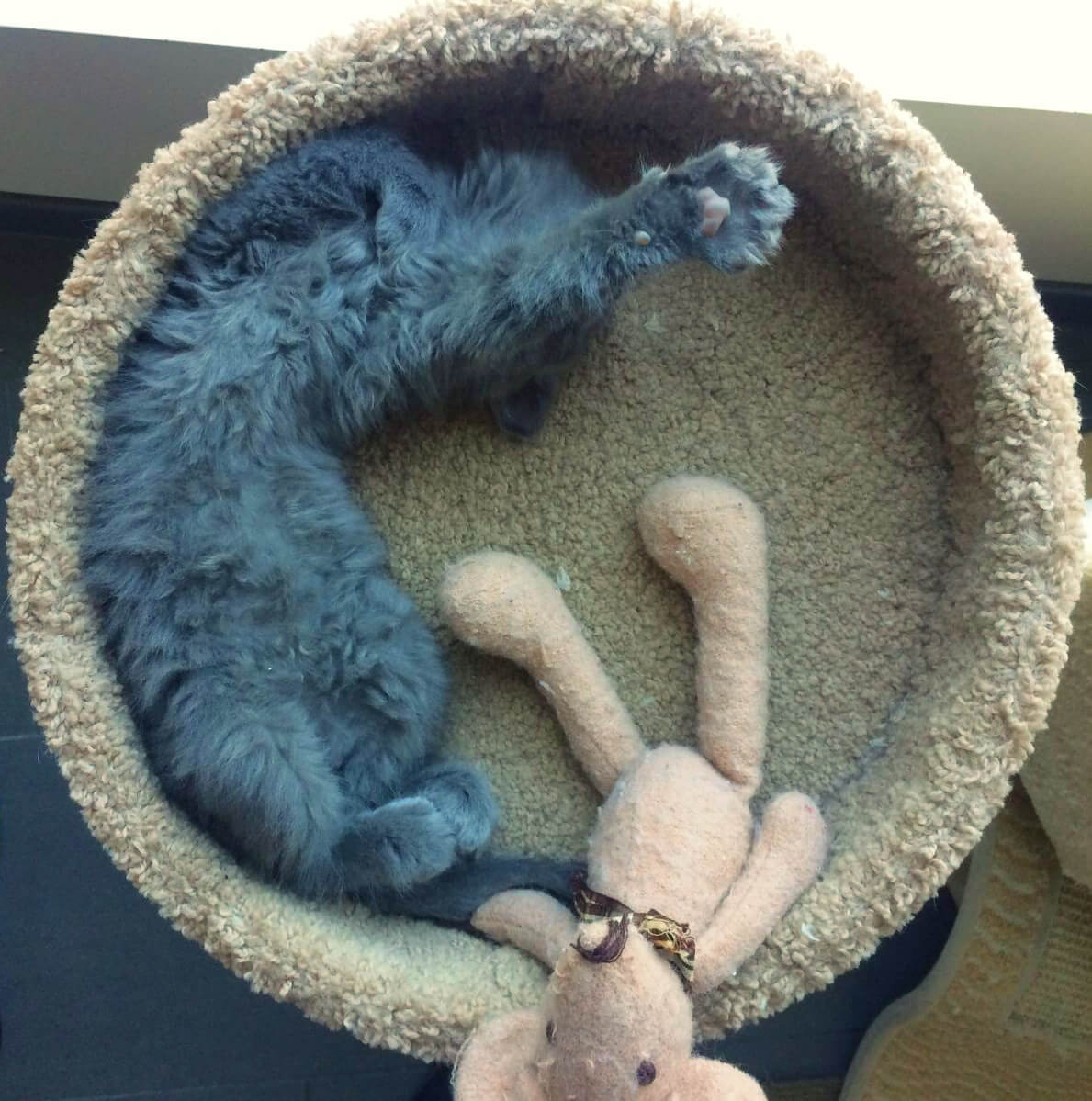Cats have to scratch as surely as birds gotta fly, for reasons buried deep in their psyches, like marking territory, as well as for play, exercise, and nail conditioning. However, rather than take a hatchet to a hangnail and remove kitty’s claws (and ligaments, muscle, and bone, for that is what happens in “declawing” surgery), there are simple, noninvasive solutions to worries about the furnishings. Those solutions, unlike declawing, do not lead to “out of litter box” experiences, neuroses, and spinal problems. Of course, if everything must be pristine and perfect, a house isn’t a home for any living being!
Kind veterinarians will not declaw. As Dr. Nichols Dodman of Tuft’s University School of Veterinary Medicine says, “Declawing is abhorrent and inhumane,” and as Dr. Louis J. Camuti, who has practiced veterinary medicine for 40 years puts it, “I wouldn’t declaw a cat if you paid me $1,000 a nail.” Declawing is illegal in England because it is cruel, and it should be here, too, but commerce sometimes gets the better of compassion.
The reasons not to declaw are too numerous to count on one paw. It can make cats who were once full of life lifeless, withdrawn, and upset, and you will not be able to turn back the clock. Also, cats naturally walk like ballerinas on their “points,” but declawing throws them off balance, forcing them to learn to walk in a very different way, which can cause irreparable and painful damage to the spine.
Some cats become so shell-shocked by the experience, and upset by the pain in their feet or memories of it post-surgery, that they will no longer use the litter box, a problem that far outdoes any damage they can do to a curtain. They can also feel betrayed by the realization that the person they thought loved them has removed a vital part of their very being. There are other problems that arise from declawing, but suffice it to say that alternatives to declawing are the only things acceptable to a kind cat companion.
Here’s how to avoid tatters:
It is the little hook on the end of your cat’s nails that is responsible for pulling threads and tearing at things, so that hook has to be worn down or snipped off. Then, bingo, the problem is solved.
1. Get as many scratching posts as you can (the horizontal ones work as well as the vertical), trying different surfaces and styles. Put catnip on them once in a while to make them super-inviting. Don’t just buy ones at the store; try to pick up the occasional log, the taller the better, or a large fallen branch. Shake it out well to dislodge insect life, then leave it outside, in the sun if possible, and up off the ground on a piece of newspaper for a couple of days, just to be extra sure. Make sure any log you bring home is anchored so that it can’t fall on your cat while being used.
2. Smear a little cologne or flea dip on any fabric area where you do not want your cat to scratch. Sometimes covering a piece of furniture temporarily with contact paper or something else that’s slippery, will stop the behavior.
3. If you have a steady hand and good eyesight, buy a pair of cat nail clippers and use them. Gently squeeze each nail out, look for the quick (this is vital), and snip the hook off only, just above the quick. If you are unsure, go to a gentle veterinarian or groomer and insist on staying with your cat while his or her nails are clipped.
-excerpted from Making Kind Choices: Everyday Ways to Enhance Your Life and Avoid Cruelty to Animals








